Introduction to Laboratory Presses
Laboratory presses are an essential tool for many scientific applications, including materials science, chemistry, and physics. They are used to create uniform and well-compacted samples for testing, and they can be used for a wide range of materials, including powders, pellets, and films. Laboratory presses are available in both manual and automated models, and they can be used for a wide range of applications, including X-ray fluorescence (XRF) pellet preparation, compression, injection molding, and more. Overall, laboratory presses are an important tool for any lab that needs to create high-quality samples for testing.
Table of Contents
Importance of Sample Preparation for Testing
Sample preparation is a crucial step in the testing process, and it cannot be overstated how important it is to obtain accurate and reliable results. The objective of sample preparation is to obtain a representative sample that is free from impurities or inconsistencies that may affect the outcome of the test.
Why Sample Preparation is Important
The importance of sample preparation lies in the fact that it helps to ensure the composition and quality of the sample is consistent. This consistency is critical for accurate and reliable results. If the sample is not prepared correctly, it may contain impurities or inconsistencies that may affect the test results.
How Lab Presses Help with Sample Preparation
Lab presses play a critical role in sample preparation. They are designed to apply pressure to samples in a controlled and precise manner. This controlled pressure helps to ensure that the sample is compressed uniformly and consistently. Lab presses can be used for a variety of sample preparation techniques such as compression, tensile testing, and bending.
Types of Samples that Require Preparation
Different types of samples require different preparation methods. For example, powdered samples may require the use of a pellet die, which is placed into the lab press to create compressed pellets. Meanwhile, solid samples may require cutting or grinding before they can be compressed.
The Role of Lab Presses in Material Testing
Lab presses are commonly used in materials testing, manufacturing, and research and development. They can be used to test a wide range of materials, including minerals, ores, rocks, slag, cement, ceramics, and glass. Lab presses are also used for testing metal filings, chips, drill chips, and turnings, as well as various metal oxides, precipitates, and residues from solutions.
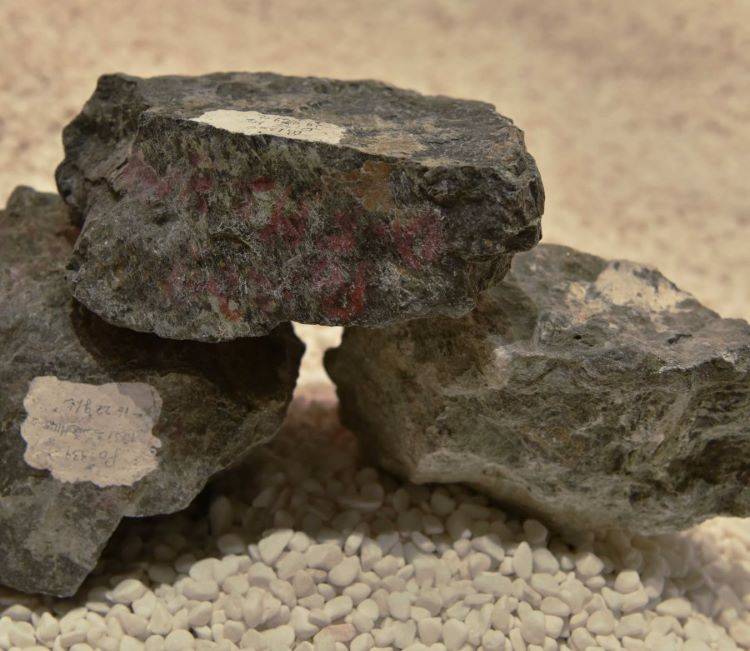
Choosing the Right Lab Press
Choosing the right lab press is important to ensure accurate and reliable results. The size, type of sample holder, and pressure range should all be considered when selecting a lab press. The lab press should be able to exert the necessary amount of force and accommodate the type of sample being prepared.
In conclusion, the importance of sample preparation for testing cannot be overstated. Lab presses play a crucial role in sample preparation, and they provide precision and control which are crucial for obtaining accurate results. Proper sample preparation is necessary for achieving reliable results, and lab presses are an important part of the process.
Materials and Applications for Laboratory Presses
Lab presses are essential tools commonly used in laboratories for a wide range of applications. One of the key features of lab presses is the materials used in their construction. The most common materials used are stainless steel, aluminum, and cast iron. These materials are chosen for their durability, strength, and resistance to corrosion. The type of material used often depends on the intended application of the press. For example, stainless steel is preferred for applications involving corrosive materials, while aluminum is often used for lighter applications.
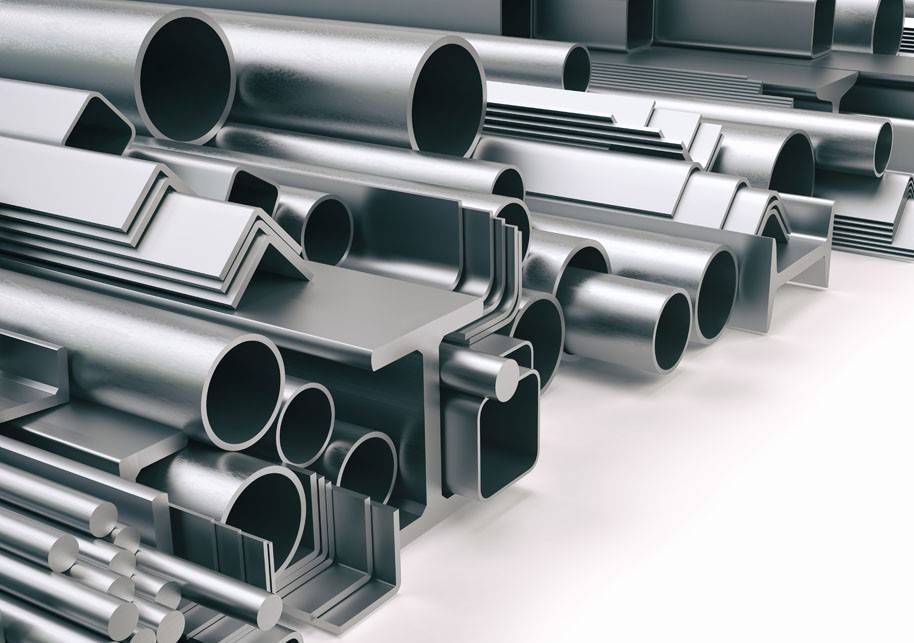
Materials Used in Laboratory Presses
-
Stainless Steel: Stainless steel is a popular material used in laboratory presses. It is known for its high resistance to corrosion, making it ideal for use in applications involving corrosive materials. Stainless steel is also durable and strong, ensuring that the press can withstand heavy use.
-
Aluminum: Aluminum is a lightweight material used in laboratory presses. It is often used for lighter applications that do not require as much force or pressure. Aluminum is also resistant to corrosion, making it suitable for use in some laboratory environments.
-
Cast Iron: Cast iron is a durable and strong material used in laboratory presses. It is often used in applications that require a high level of force or pressure. Cast iron is also resistant to wear and tear, ensuring that the press can withstand heavy use.
Applications of Laboratory Presses
Lab presses are used in a wide range of applications, including materials science, chemistry, and biology. The different types of laboratory presses, such as hydraulic, pneumatic, and manual presses, are used for different applications. The choice of press type often depends on the level of force required, the precision needed, and the size of the sample being tested.
-
Materials Science: In materials science, lab presses are used to test the mechanical properties of materials such as tensile strength and compressive strength. These tests allow manufacturers to determine the strength and durability of their products.
-
Chemistry: In chemistry, lab presses are used for catalytic studies, high-pressure reactions, and the synthesis of polymers. These presses allow chemists to study the properties of materials under high pressure and high force conditions.
-
Biology: In biology, lab presses are used for cell culture, DNA extraction, and protein purification. These presses allow researchers to study biological materials under controlled conditions.
-
Sample Preparation for Spectroscopy: Lab presses are commonly used to prepare samples for spectroscopy analysis. For example, hydraulic presses are used to create KBr pellets for FTIR (Fourier transform infrared spectroscopy), as well as general sample pellets for XRF (X-ray fluorescence). These pellets allow scientists to study the molecular structure and elemental composition of a sample.
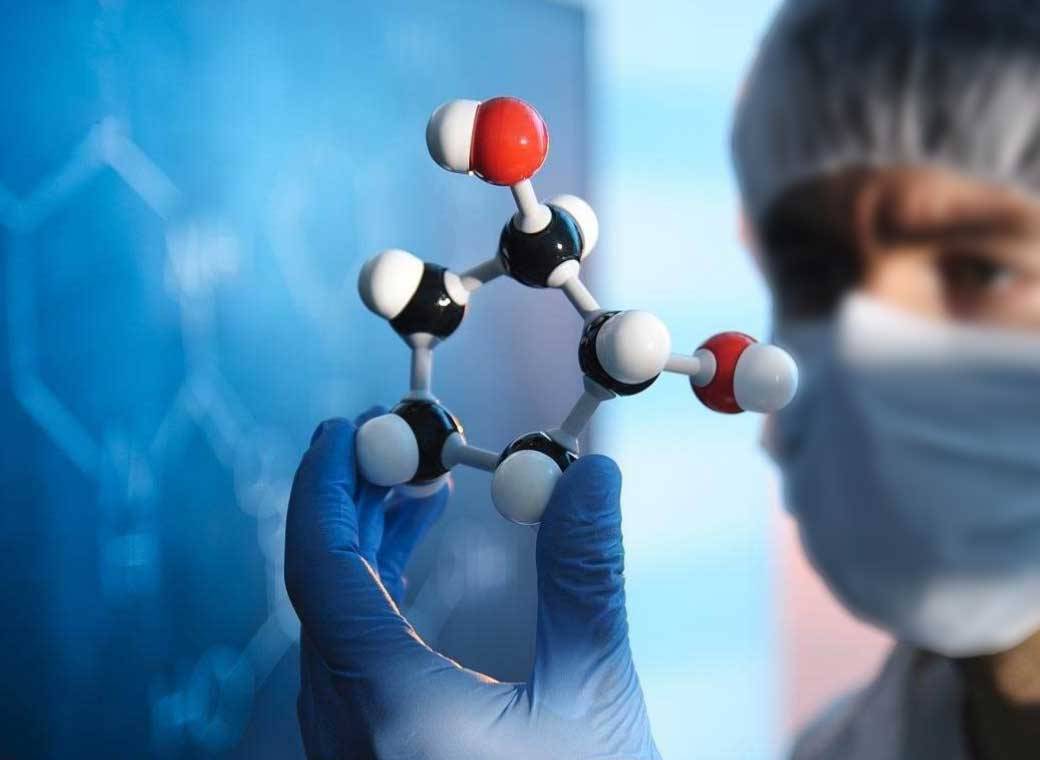
In conclusion, laboratory presses are essential tools used in laboratories for a variety of applications. The materials used in their construction, such as stainless steel, aluminum, and cast iron, are chosen for their durability, strength, and resistance to corrosion. The type of material used often depends on the intended application of the press. Lab presses are used in a wide range of applications, including materials science, chemistry, and biology. The different types of laboratory presses are used for different applications, depending on the level of force required, the precision needed, and the size of the sample being tested.
Types of Laboratory Presses
Laboratory presses come in different types, each with its own advantages and disadvantages, depending on the application's requirements. In this section, we'll explore the various types of laboratory presses available in the market.
Manual Hydraulic Press
The first type of laboratory press is the manual hydraulic press. As the name suggests, this press requires human effort to apply force. It uses a hand-operated lever to apply load to a sample. A mechanical lever controls a piston which moves in a cylinder containing hydraulic oil, exerting pressure on a die or head containing the desired material. By turning the lever back and forth, pressure from the cylinder can be increased or decreased until an optimal amount of force is achieved for a given task. Manual hydraulic presses are relatively inexpensive and require little maintenance.
Pneumatic Press
A pneumatic press is another type of laboratory press that uses compressed air to generate force. It operates by using compressed air to drive a piston, which then applies force to the sample. Pneumatic presses are relatively fast and can achieve high forces. They are also easy to use and require little maintenance. However, they can be noisy and may require a source of compressed air.
Electric Press
Electric presses use an electric motor to generate force. They are more precise than manual or pneumatic presses since they can be controlled to a high accuracy and repeatability. Electric presses are often used for industrial XRF applications and other laboratory sample manipulation activities. They can also be used for small and large-scale manufacturing practices, including hot embossing, laminating, and melting polymers for thin films.
Hydraulic Press
The hydraulic press is a type of laboratory press that uses a hydraulic system to generate force. It is one of the most common types of laboratory presses available in the market. Hydraulic presses are versatile and can apply high forces accurately. They use a hydraulic system to generate force, which means they can be controlled to a high degree of accuracy and repeatability. Hydraulic presses are often used for compression molding of polymers, powder compaction, tablet pressing, and material testing.
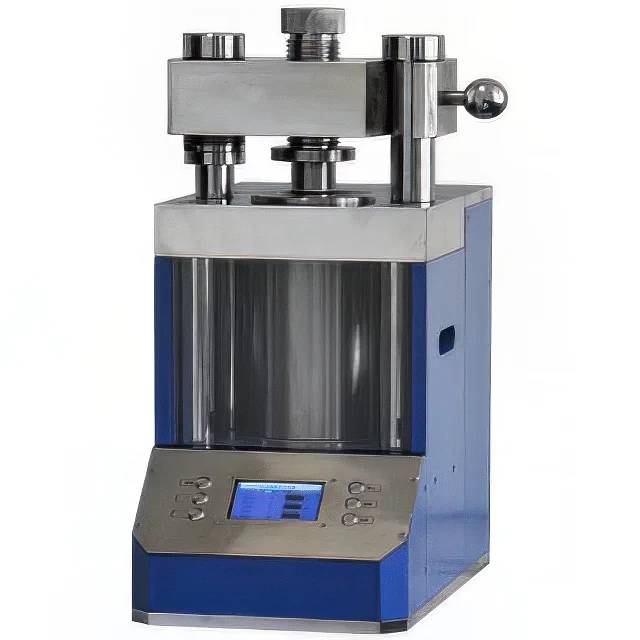
Automatic Hydraulic Presses
Automatic hydraulic lab presses are essential laboratory equipment used for a variety of applications, including material science, ceramics, geology, and pharmaceutical research.
Precise Control of Pressure and Speed
These presses are designed to apply high pressure to samples to obtain accurate and consistent results. One of the key features of lab presses is their automatic hydraulic systems, which offer precise control of pressure and speed. These systems are equipped with advanced software that can be programmed to achieve specific pressure and time requirements. The hydraulic system also ensures uniform pressure distribution across the sample, eliminating the risk of deformation or damage.
Robust Construction and Safety Features
Another important feature of lab presses is their robust construction, with high-quality materials used to withstand the rigorous demands of laboratory work. They are also designed with safety features such as emergency stop buttons and interlocks to prevent accidents.
Customization Options
The presses come with various options for customization, including a range of force capacities, different platen sizes, and heating or cooling options.
Improved Workflow and Ease of Use
In addition, they are easy to maintain and operate, with user-friendly interfaces and minimal maintenance required. Automatic hydraulic presses often improve the workflow in busy laboratories, as – once the press is programmed – it can operate autonomously, allowing the technician to get to work on other tasks.
Overall, automatic hydraulic lab presses are an essential piece of equipment for any laboratory that requires reliable, efficient, and accurate sample preparation. With their precise control of pressure and speed, robust construction, and customization options, they offer a convenient and effective solution for a wide range of laboratory applications.
Presses for XRF Pellet Preparation
X-ray fluorescence (XRF) pellet preparation is a widely used technique in elemental analysis of materials. Lab presses play a vital role in this process by applying high pressure on the sample to form a pellet. There are a variety of lab presses available in the market, but they all share some common key features.
Key Features of Lab Presses for XRF Pellet Preparation
-
Pressure Mechanisms Lab presses for XRF pellet preparation use either hydraulic or manual pressure mechanisms to apply high pressure on the sample. The pressure range can vary depending on the type and model of the press. Generally, a pressure of between 15 and 40 tons is used for pressing pellets.
-
Construction Material Most lab presses are made of high-quality stainless steel, which is durable and corrosion-resistant. The construction material of the press is important to ensure that the press will last long and not corrode easily.
-
Size and Shape The size and shape of the press can vary, from compact bench-top models to larger floor-standing presses. The shape of the press can also vary, from circular to rectangular shapes, depending on the specific application. The size and shape of the press should be chosen according to the quantity and size of the samples being analyzed.
-
Ease of Operation Lab presses should be easy to use and require minimal training to operate. The pressing procedure can be described as a load applied to the sample in order to compress it so that the powder will bind and form a solid pellet. The press should be easy to operate and have clear instructions.
-
Safety Features Safety features such as emergency stop buttons, interlocks, and shields are crucial to ensure safe operation of the press. These features help prevent accidents and ensure that the process is safe for the operator.
Sample Preparation for XRF Pellets
The process of making XRF pellets includes grinding the sample to a fine particle size, mixing it with a binder or grinding aid in a grinding or mixing vessel, pouring the mixture into a pressing die and pressing the sample at a pressure of between 15 and 40 tons.
Standard XRF Pellet Die
It is possible to directly press a sample in a die and depending on the sample holder of the spectrometer, it may be possible to use the pressed sample as it is. However, the most common method is to use a crushable aluminum support cup. These are low-cost cups made from thin aluminum.
Ring XRF Pellet Die
Some spectrometers offer an automated loading system or a tool that can be used to load the sample. In these cases, samples are pressed into a metal ring. There are different rings available, and this again depends on the requirements of the spectrometer.
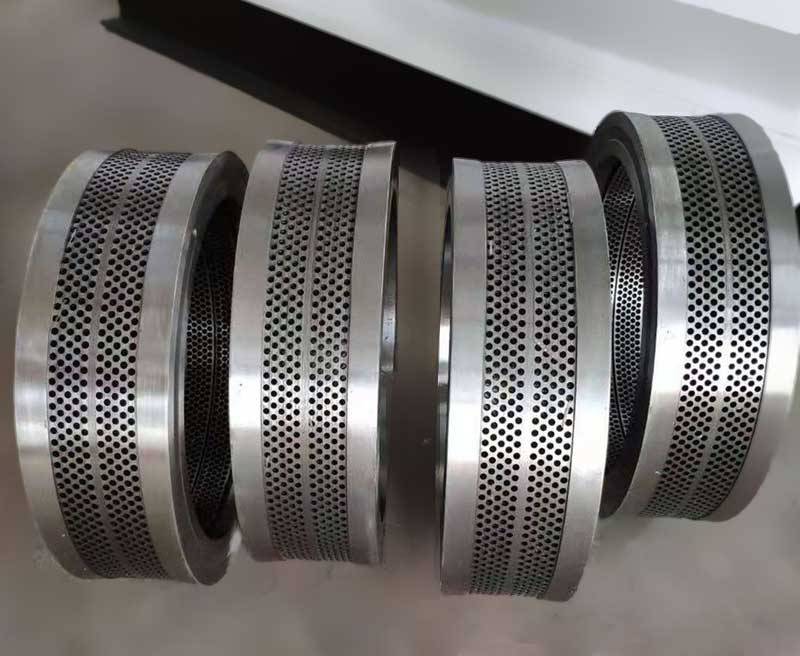
Conclusion
Lab presses play a vital role in XRF pellet preparation by applying high pressure on the sample to form a pellet. The key features of lab presses for XRF pellet preparation include pressure mechanisms, construction material, size and shape, ease of operation, and safety features. The process of making XRF pellets involves grinding the sample, mixing it with a binder or grinding aid, pouring the mixture into a pressing die, and pressing the sample at a pressure of between 15 and 40 tons. Standard XRF pellet die and ring XRF pellet die are the two most common methods used for pressing the sample.
Conclusion on the Importance of Lab Presses
In conclusion, lab presses play a crucial role in sample preparation for testing in various industries, including pharmaceuticals, materials science, and geology. They are essential for producing high-quality pellets for XRF analysis, and they help ensure the accuracy and reproducibility of test results. The choice of the type of lab press depends on the specific application, and there are different options available, including manual, automatic hydraulic, and mini presses. Investing in a lab press can save time and effort in sample preparation, leading to more efficient and reliable testing procedures.
Related Products
- Manual Lab Heat Press
- Automatic Laboratory Hydraulic Pellet Press Machine for Lab Use
- Heated Hydraulic Press Machine with Heated Plates for Vacuum Box Laboratory Hot Press
- Laboratory Hydraulic Press Lab Pellet Press Machine for Glove Box
- Heated Hydraulic Press Machine with Heated Plates for Vacuum Box Laboratory Hot Press
Related Articles
- Understanding Hydraulic Pellet Press: Working Mechanism and Applications
- Understanding the Importance and Applications of Laboratory Presses
- Automatic Hydraulic Press: The Ultimate Guide for Efficient Sample Preparation and Industrial Processes
- Comprehensive Guide to Hydraulic Hot Press: Function, Features and Applications
- Hydraulic Presses vs. Mechanical Presses Which is Right for Your Laboratory



















